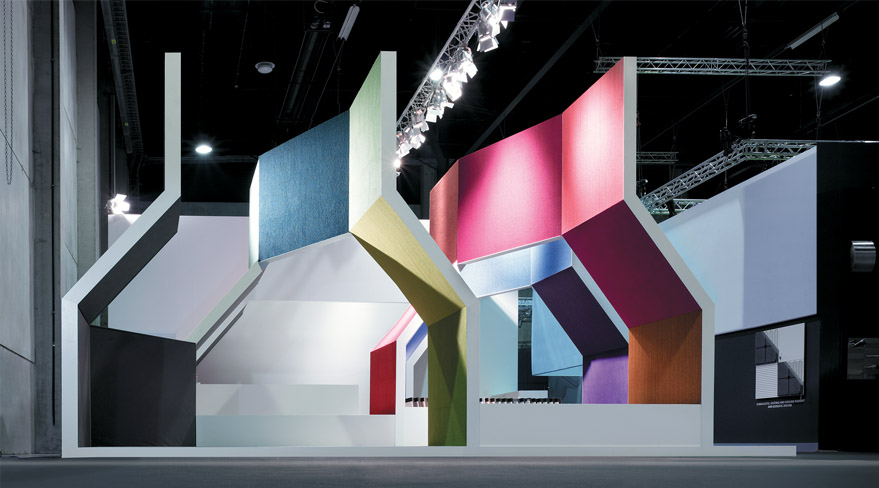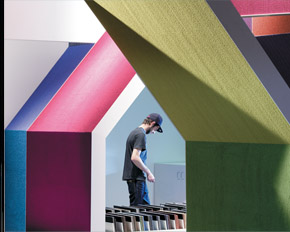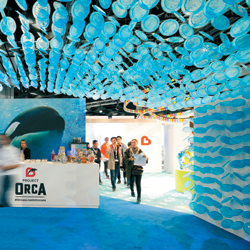 |
GOLD AWARD |
Category: International Designer
Exhibitor: Desso B.V.
Design: Tulp Design GmbH, Munich, Germany, 49-89-76-70-32-00, www.tulp.de
Fabrication: Ulff & Ulff GmbH & Co. KG, Wassenberg, Germany, 49-2432-89-11-353, www.ulff-und-ulff.de
Show: Interieur, 2010
Budget: $52,730
Size: 26-by-26 feet
Cost/Square Foot: $78 |
 |
 arpet maker Desso B.V. uses a "cradle-to-cradle" process when manufacturing EcoBase, its new environmentally conscious flooring. Raw materials are transformed into carpet, which can be reclaimed and recycled into new carpet at the end of its useful life. arpet maker Desso B.V. uses a "cradle-to-cradle" process when manufacturing EcoBase, its new environmentally conscious flooring. Raw materials are transformed into carpet, which can be reclaimed and recycled into new carpet at the end of its useful life.
So to jumpstart conversations about its cradle-to-cradle carpeting, Desso wanted to artistically - and abstractly - reference that eco-conscious narrative with its exhibit. The company asked Tulp Design GmbH to create a structure that would both showcase its floor coverings and tell its
environmental tale in a creative way at the 2010 Interieur expo in Belgium. The result was an exhibit that resembled M.C. Escher's famous "Relativity" lithograph.
Every structural element inside the 26-by-26-foot booth was covered on two opposite sides by EcoBase tiles. One side showed the colorful tops of the tiles while the opposite surface showed the muted tone of the carpet backing.
The exhibit began in one corner as a wall element 4 feet in width. Retaining that width as the structure wound through the booth, the wall angled to become a ceiling that quickly morphed into a short wall that led to a seating area and display case. From there, the booth structure switched from a vertical element to a horizontal one as the overall structure twisted like a meandering path across, above, and through the space.
Like the Escher work, the booth's elements constantly flipped from one perspective to another. "It created an optical illusion of sorts," said one Exhibit Design Awards judge, "where the structural elements transitioned from wall to ceiling to wall to seating and back again." In other words, just like the company's cradle-to-cradle carpeting, the exhibit's elements started as one thing, before being transformed into another, and yet another.e
|




 arpet maker Desso B.V. uses a "cradle-to-cradle" process when manufacturing EcoBase, its new environmentally conscious flooring. Raw materials are transformed into carpet, which can be reclaimed and recycled into new carpet at the end of its useful life.
arpet maker Desso B.V. uses a "cradle-to-cradle" process when manufacturing EcoBase, its new environmentally conscious flooring. Raw materials are transformed into carpet, which can be reclaimed and recycled into new carpet at the end of its useful life.






